
10 minute read
Biomimetics - the influence of nature on design
Charlie Morris Lower Sixth
In winter every day the northern hemisphere is pumping out carbon dioxide at an alarming rate. This creates the induced greenhouse affect where too much of the sun’s light rays are getting trapped in the atmosphere causing global warming. Day by day this carbon dioxide along with other harmful gasses such as methane increases, blanketing our atmosphere. If this continued throughout the year the earth’s temperatures would sky rocket. However, the natural world has a way of cleaning up our mess. Something that we have no control over happens, as the snow begins to melt, trees spring to life and the deciduous forests of the north begin to breathe in the carbon dioxide in the air that we so unthoughtfully put there. This continues all the way until the leaves start to fall off the trees when autumn arrives and the trees lie dormant for another year. Regulating and absorbing carbon dioxide on a mass scale to prevent a changing climate is something we can only grasp at achieving. So when we look for solutions to human caused issues shouldn’t it be nature that we look to? That is exactly what biomimicry is, looking to nature to learn from and mimic the strategies to solve human design. Janine Benyus, a natural sciences writer, wrote that ‘we should be looking at the biological elders’ and be ‘apprentices to these masters’. We are a very young species only about 200,000 years old. So with new design
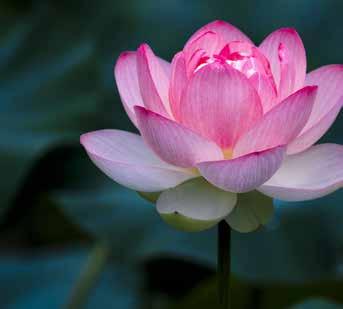
problems we face every day shouldn’t we be Sciences can use bacteria to make bee silk turning towards life that has perfected its proteins and spin them into solid strings own functions for up to billions of years to just as bees do. However, no scientist has be as efficient and as effective as possible yet been able to produce a fiber as strong for each circumstance and environment? as that of a spider with the normal pressure One place humans have tried to mimic and temperature it is able achieve it in. other organisms is in the production of Another place nature has been looked at materials. All other species can only make for inspiration for our own design is in new materials in or near their own bodies. architecture. A slightly different approach This means that they have found a way to is adopted whereby the sustainable design form the materials they need without the can be achieved by following a ‘set of immense pressures and temperatures that principles’ rather than ‘stylistic codes’. This we use in the lab. A good example of this means we don’t so much replicate nature’s is silk, which can be produced by beetles, form or function but design by recognizing spiders, silkworms and bees, just to name the rules that conduct these. The idea a few. So for instance a spider inside its can be traced back as early as the ancient abdomen has watery proteins as well as Greeks and Romans who made things special nozzle like organs such as treecalled spinnerets. The watery proteins with a The lotus temple inspired columns. However, the simple reaction can form in New Delhi, for term only seems the silk which hardens when in contact with the air. Although this process instance, takes the shape of the lotus, to have come into imagery in the 1930s. Looking only requires water and a sacred flower at the aesthetic can be done at room temperature the fibre that the spider produces is 5 among almost all Indians. side generally a designer looks to flowers for their times stronger than steel inspiration. The and can be up to 50 times lighter! This is lotus temple in New Delhi, for instance, being looked at by fibre manufactures along takes the shape of the lotus, a sacred flower with scientists to make materials with these among almost all Indians as it symbolizes properties with this ease. For example, purity of the heart and mind. To capture Dr. Tara Sutherland at CSIRO Ecosystem the beauty of the flower it ended up being 64
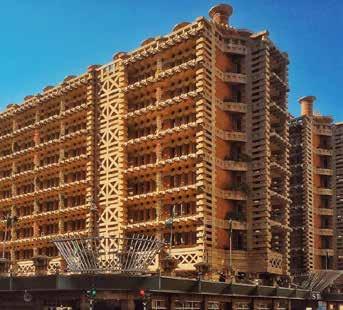
the world’s largest poured in place white concrete shell structure with each shell resembling a lotus’s curved petals. Lotus flowers are most commonly found in ponds and grow till they are out of the water where they can bloom so 9 pools are built in around the structure of the temple. These simple design features and structure have made it one of the most visited buildings in the world.
Architects can also look to nature to help with functional complications when designing. In 1991 architect Mick Pierce was employed in Harare, Zimbabwe, to build the largest retail building in the country called the Eastgate Centre. However with limited funds they didn’t have the money needed to pay for the expensive air-conditioning. How could you
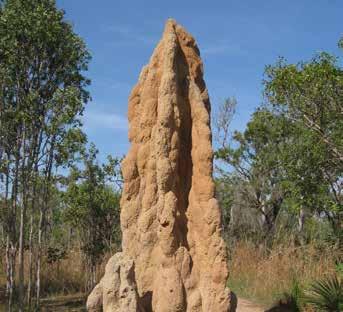
design a building that regulates its own night air from outside which gets dispersed temperature? Well termites’ mounds were throughout the centre’s seven floors. This the answer. Millions of termites live inside is then absorbed by the building and can these structures chill the circulating air. When so some of them can be as much as ten meters How could you design a building the heat rises during the day, warm air is vented up and released by the chimneys. high. On a human that regulates its This simple ventilation scale that is like a sky scraper over 3 and a half own temperature? Well, termites’ similar to the termites allows the building to regulate the temperature with ease thus kilometers tall. mounds were the eliminating the temperature During the day the sun heats the answer. swing problem that can often be as much as 50 degrees from mound causing night to day in Zimbabwe. air to rise up the sides and then cool air sinks down the middle. At night this There were other things that helped as reverses as the sides lose heat to the cold well, such as the materials in the Eastgate outside air. The way Mick Pierce replicated Centre. These mimicked those of the this was by having mini fans pulling in cool termite mounds by having a very high
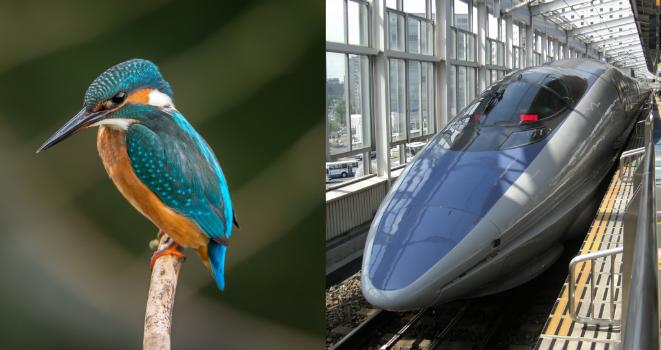
Carbon dioxide concentration levels in winter and in summer

thermal mass which means they can absorb came up with a solution was not with fancy a lot of heat without really changing new technology but was by taking influence temperature. Not only that the exterior of from different birds. Eiji Nakatsu was the the building is prickly like a cactus, this general manager of the project but in his increases the surface area of the building spare time he was a bird watcher. He used improving heat loss at night and reducing this and found different ways to redesign heat gain during the day. With all these the shape of the train to go faster without techniques that have come from nature, creating the boom. Mick Pierce’s ingenious architecture for the Eastgate Centre complex has meant it The first redesign was on the pantographs consumes 90% less energy. And as of 2017, which connect the train to the electrical it had saved the company $3.5 million in air wires above. The struts and linkages in the conditioning costs. mechanism were adding to the noise by causing large Karman vortices (turbulence) My favourite example of biomimicry is in as the air rushes over. Nakatsu got his the Shinkansen trains or more commonly inspiration from owls which have fimbriae, known as the bullet trains. It was built to a comb like array of serrations. These break connect Tokyo to distant parts of the Japan down the passing air into micro turbulences and is well known for its remarkable top therefore muffling the sound. The new speed of 200mph. The original line that redesigned ‘wing-graph’ was a great opened in 1964 can get you from Tokyo to success. The second redesign was to try to Osaka (340 miles) in 2 and a half hours. As lower the sudden change in air resistance a comparison in the UK you can get a train as the train left the tunnels which was the from London to Inverkeithing (340 miles) in main cause for the boom. Nakatsu from his just under 5 hours! Unfortunately there was bird watching experiences looked to the a problem. Generally the cross-sectional kingfisher, a bird that had adapted to these area of a train is only just less than that of conditions brilliantly as it can dive into the tunnel, this means that air has nowhere water to catch its prey with barely a splash. to escape when the He surmised that the train passes through. This in turn causes compression waves to [T]he optimum shape being that shape of its bill was what allowed it to pull this off. The design team set up build at the front of almost identical tests that shot bullets of the train. When trains leave a tunnel the waves coalesce into a shock to the bill of the kingfisher. various shapes from the more traditional train nose to a shape modelled wave that generates after a kingfisher into a boom. The magnitude of the boom is a pipe to measure pressure waves. Not proportional to the cube of the trains speed only that, these same shapes were run in so in the bullets train’s case the boom simulations on a supercomputer. Both tests could be heard up to 400m away. This was resulted in the optimum shape being that a massive problem if it was going to be almost identical to the bill of the kingfisher. passing through a lot of built-up residential When the redesign debuted in 1997, the areas. The way the Japanese engineers boom effect was reduced so much so that 66 the train adhered to the standard noise level of 70dBa while travelling at its much higher speeds. Additional improvements like 15% less fuel needed and it being 10% faster further show how useful these natural organisms are in the design.
These are just a few examples of how humans are turning to nature not only to learn from and mimic the strategies to solve human design, but to help them find solutions for the future sustainability of our planet.
SO, YOU THINK YOU’RE FREE Two White Horses TO CHOOSE YOUR UNIVERSITY? Creative writing
Grace Whelan Eve Rushin
Lower Sixth Lower Sixth
The sea is rough, he knew that though The waves are high and ruthless, No thought of who or what might ride along them, They still churn things up and break their hope, Shall I still ride along with them? No one else has quivered out, Yet here I stand alone again. Without the faith I once adored.
The faith, warm and a glow, As beautiful as two white horses Yet I cannot find the light that once shone so bright. The crash of the storm a year ago, I lost him there but the winds still blow.
More black and grey then blue and green, No life down there, no fish, no plants Yet they seem to find it happy enough They can find the joy down there, but no, joy was not something he could find. She knew how to act and when to smile Yet I could not loose myself. The waves are high and ruthless, Still crashing down inside.
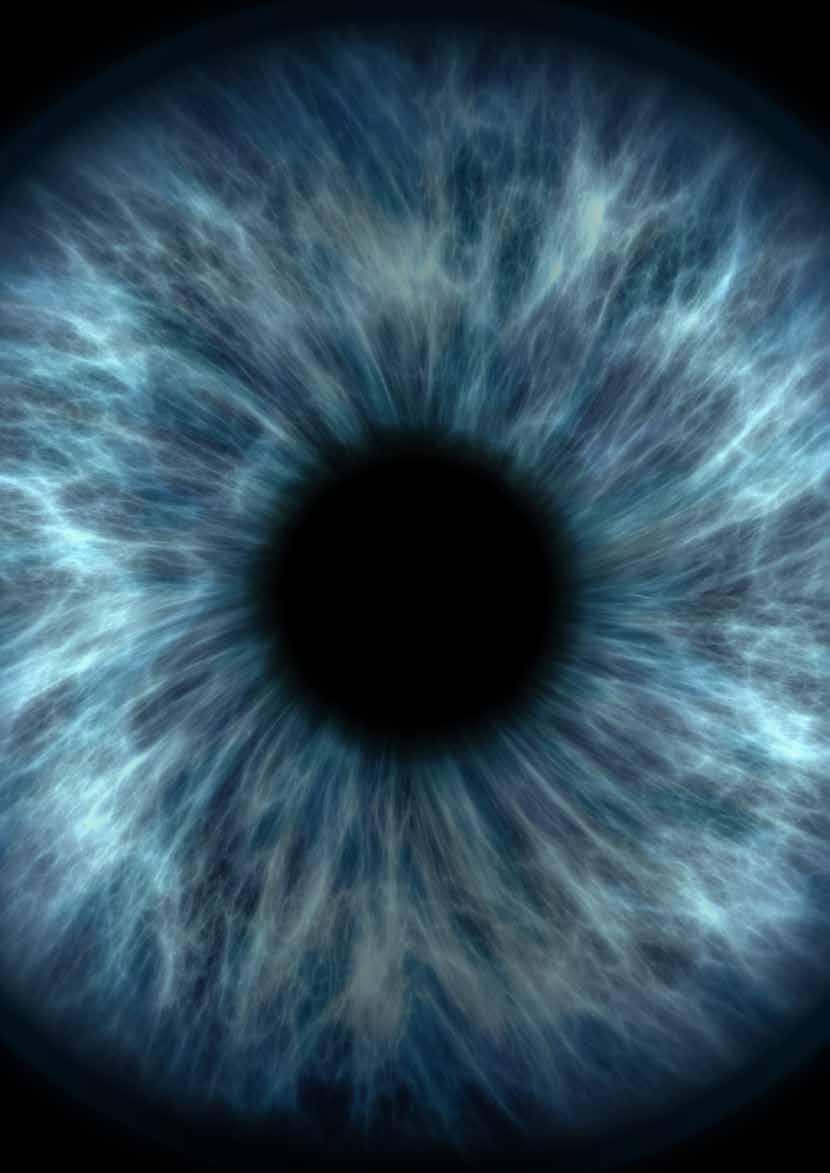
He smiled but it did not reach his eyes, I can see the pain in those eyes More black and grey than blue and green As she described his eyes. When he kissed it was not for love I could feel the pain in his actions, He is not the man I once adored.
Noise filled the room, the clink of glasses And the high pitched and low groans of voices The noise was engulfing and the lights too dim. The room was full, Yet here I stand alone again
Should I even ask the question? I cannot ask because there will be no answer He is gone never to return I lost it in the storm, it churned faith up and broke my hope As beautiful as two white horses but I had to let her go.










